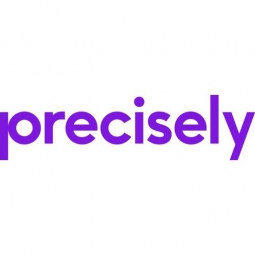Luxury brands focus on quality of customer data, as globetrotting buyers expect to be known wherever they go

Customer Company Size
Large Corporate
Country
- Worldwide
Product
- Spectrum Data Stewardship
- Spectrum Data Quality
- Spectrum Global Addressing
- Spectrum Context Graph
- Spectrum OnDemand
Tech Stack
- Salesforce CRM
- ERP Applications
Implementation Scale
- Enterprise-wide Deployment
Impact Metrics
- Customer Satisfaction
- Digital Expertise
Technology Category
- Platform as a Service (PaaS) - Data Management Platforms
- Application Infrastructure & Middleware - Data Exchange & Integration
Applicable Industries
- Consumer Goods
- Retail
Applicable Functions
- Sales & Marketing
- Business Operation
Services
- Data Science Services
- System Integration
About The Customer
The customer is a world leader in luxury goods, known for its innovation in brand development and business approach. It distributes brands in more than 120 countries, managing more than 15 luxury brands. The company is focused on providing a seamless omnichannel and global in-store experience to its highly demanding clientele, who are connected, mobile, and travel extensively around the world. The company aims to align customer information for each of its brands globally and across channels, giving them a single customer view.
The Challenge
Luxury brands are challenged to continually satisfy their highly demanding clientele, who are connected, mobile and travel extensively around the world. Providing a seamless omnichannel and global in-store experience posed a stiff challenge to one multi-brand company that manages more than 15 luxury brands. The company set out to align customer information for each of its brands globally and across channels, giving them a single customer view. To do so, the company first had to improve the quality of its customer information.
The Solution
The company leveraged several components of the modular Spectrum platform from Precisely. Spectrum Data Quality Connectors align the data in its Salesforce customer relationship management (CRM) and its enterprise resource planning (ERP) applications. The Spectrum software validates and cleanses data in real time at the point of entry, or as part of a routine batch data improvement process. Another feature that proved critical was the ability to seamlessly verify and correct address data from many countries, which differ widely in addressing format and language. Spectrum Advanced Global Address Management supports data sources that may include not only addresses, but also emails and phone numbers, which deliver more accurate and complete information for marketing campaigns.
Operational Impact

Case Study missing?
Start adding your own!
Register with your work email and create a new case study profile for your business.
Related Case Studies.
.png)
Case Study
Improving Vending Machine Profitability with the Internet of Things (IoT)
The vending industry is undergoing a sea change, taking advantage of new technologies to go beyond just delivering snacks to creating a new retail location. Intelligent vending machines can be found in many public locations as well as company facilities, selling different types of goods and services, including even computer accessories, gold bars, tickets, and office supplies. With increasing sophistication, they may also provide time- and location-based data pertaining to sales, inventory, and customer preferences. But at the end of the day, vending machine operators know greater profitability is driven by higher sales and lower operating costs.

Case Study
Improving Production Line Efficiency with Ethernet Micro RTU Controller
Moxa was asked to provide a connectivity solution for one of the world's leading cosmetics companies. This multinational corporation, with retail presence in 130 countries, 23 global braches, and over 66,000 employees, sought to improve the efficiency of their production process by migrating from manual monitoring to an automatic productivity monitoring system. The production line was being monitored by ABB Real-TPI, a factory information system that offers data collection and analysis to improve plant efficiency. Due to software limitations, the customer needed an OPC server and a corresponding I/O solution to collect data from additional sensor devices for the Real-TPI system. The goal is to enable the factory information system to more thoroughly collect data from every corner of the production line. This will improve its ability to measure Overall Equipment Effectiveness (OEE) and translate into increased production efficiencies. System Requirements • Instant status updates while still consuming minimal bandwidth to relieve strain on limited factory networks • Interoperable with ABB Real-TPI • Small form factor appropriate for deployment where space is scarce • Remote software management and configuration to simplify operations

Case Study
Digital Retail Security Solutions
Sennco wanted to help its retail customers increase sales and profits by developing an innovative alarm system as opposed to conventional connected alarms that are permanently tethered to display products. These traditional security systems were cumbersome and intrusive to the customer shopping experience. Additionally, they provided no useful data or analytics.

Case Study
How Sirqul’s IoT Platform is Crafting Carrefour’s New In-Store Experiences
Carrefour Taiwan’s goal is to be completely digital by end of 2018. Out-dated manual methods for analysis and assumptions limited Carrefour’s ability to change the customer experience and were void of real-time decision-making capabilities. Rather than relying solely on sales data, assumptions, and disparate systems, Carrefour Taiwan’s CEO led an initiative to find a connected IoT solution that could give the team the ability to make real-time changes and more informed decisions. Prior to implementing, Carrefour struggled to address their conversion rates and did not have the proper insights into the customer decision-making process nor how to make an immediate impact without losing customer confidence.








